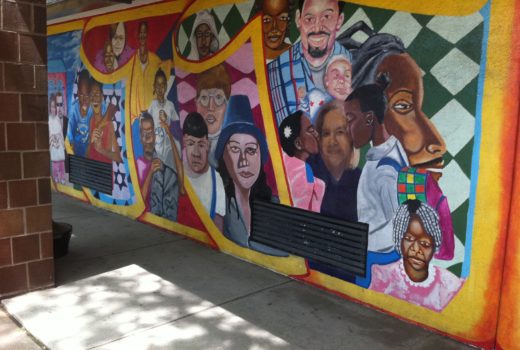 Demographics in American higher education are changing dramatically. A recent study by the Migration Policy Institute (MPI) reveals that 11.3 million people ages 16 to 26 (one in four) are first- and second-generation immigrants. Moreover, the report continues, between 1995 and 2010, immigrant-origin youth accounted for half of all growth in the nation’s population of young people overall. This youth population is increasingly composed of the second generation, which has become 36% larger than the first generation. By 2010, first-generation young adults (ages 16 to 26) numbered 4.8 million, but second-generation young adults numbered 6.5 million. The picture becomes more complex when one considers the diversity in this second generation: They have roots in many different countries, speak different languages and have differing legal statuses and civic rights.
Demographics in American higher education are changing dramatically. A recent study by the Migration Policy Institute (MPI) reveals that 11.3 million people ages 16 to 26 (one in four) are first- and second-generation immigrants. Moreover, the report continues, between 1995 and 2010, immigrant-origin youth accounted for half of all growth in the nation’s population of young people overall. This youth population is increasingly composed of the second generation, which has become 36% larger than the first generation. By 2010, first-generation young adults (ages 16 to 26) numbered 4.8 million, but second-generation young adults numbered 6.5 million. The picture becomes more complex when one considers the diversity in this second generation: They have roots in many different countries, speak different languages and have differing legal statuses and civic rights.
These demographics and characteristics have huge implications for higher education. Simply stated, two- and four-year colleges will see dramatically rising numbers of second-generation immigrant students. The need to gain deeper knowledge about this group has never been greater. The Immigrant Learning Center’s recently released study, Adult Children of Immigrant Entrepreneurs: Memories and Influences, provides insight into the backgrounds and experiences of second-generation students who talk about family businesses, families, graduate schools and career choices. These children of immigrant entrepreneurs were expected to help with the businesses, but their parents also saw education as the path to a better life and encouraged their educational pursuits.
Through focus groups and interviews with 41 students attending Massachusetts colleges, the study offers a microcosmic perspective of America’s increasingly diverse college campuses. Authors Nga-Wing Anjela Wong of the University of Alaska Fairbanks and Paul W. Watanabe and Michael Liu of the University of Massachusetts Boston recruited the participants through universities, Facebook and various listservs. In all, there were 28 Asian Americans and 12 Latinas/os comprising 27 females and 13 males who were supported by their parents’ businesses. The students’ diversity of majors (from theology to public health, medicine, law, education and social work) matched their range of ancestral countries (from Cambodia to Cuba, Malaysia and Mexico). Family businesses were typically neighborhood operations such as restaurants, nail salons, jewelry stores and car repair shops.
The parents usually became entrepreneurs out of necessity. Language barriers, a lack of recognition of their foreign degrees or a lack of educational credentials together meant getting decent jobs in American companies was unlikely. They used community networks in the ethnic enclaves where they resided for the finance, expertise and labor they needed to launch their own businesses. As Manny*, a Dominican graduate student whose mother ran a restaurant, said: “Language is a big barrier when parents come here and they don’t speak English and they come at an older age. … My mother, I imagine she couldn’t do anything else. I mean, she didn’t know how to speak English.”
[Where * appears, indicates not the person’s real name.]
Some participants did not play active roles in the family business. Instead, they were given the time and space to focus on their education. Peter*, a Chinese American, was shielded from his family’s insurance business in Boston’s Chinatown. His parents, he said, “tried to make [him] more of the stereotypical white person” in his neighborhood “and just to do well in school to fit in.”
While such sentiment was present, an intimate connection to their families’ businesses was more common. Offering a timeless image of devotion, Betty*, a second-generation Chinese American and medical student at Tufts University, vividly remembered how “she grew up in [her family’s] restaurant” where she would often end up sleeping on sacks of rice:
“My cousins and I used to sleep on sacks of rice in the back during rush hour. We would put down all our coats and … spread them out. If something needed to be done, they would call us, and we would run and do it and we would come back and continue taking naps on these sacks of rice.”
Such involvement meant a tremendous amount of responsibility, engendering a work ethic that helped steer them toward graduate school. More than merely waiting on tables, the children would often be found doing purchasing, invoicing, taxes, deliveries and especially customer service. Because of language barriers, parents depended on their children to bridge their world with the dominant society. Sam*, a second-generation Korean American, was an unexpected hit as the “lunch-time entertainment” at his parents’ sandwich shop in Orange County, California. Having grown up in the U.S., he spoke English flawlessly. So he would go around the tables talking to the customers from as early as six years of age. “I think that’s where I learned all my social skills,” he said. “Apparently, business went up after I started doing this.”
That bridge between the immigrant and American world was precisely what parents worked to achieve through their children. For parents, pursuing the “American dream” meant working hard at their businesses and providing for their families. For their children, that dream could be achieved through education.

Jeffrey Juarez-Araniva’s parents came from El Salvador to flee civil strife and make better lives for themselves. They sold goods at Los Angeles swap meets and imbued their son with a work ethic and determination that saw him through to MIT, where he graduated with his master’s in Urban Planning. Courtesy of Denzil Mohammed/ILC.
Feeling a sense of indebtedness, education was a way for the children to give back to the families and communities that helped to push them toward success. With professions in such areas as medicine, law, social work, education and public health, many students had an expressed desire to help their communities through their choice of degree programs.
Education was also a powerful means of overcoming social barriers. A Mexican girl named Malaya* recalled playing soccer in her home state of California where the other teams were “all White.” “They would call us names and tell us we don’t belong,” she said. “It was very obvious from being Mexican that I wasn’t going to get acceptance automatically to the places that could get you wherever you wanted to go.”
From the parents’ perspective, education could also bring their children the financial stability that they lacked at home. Running a business of any kind involves tremendous risk, and parents encouraged their children to pursue degrees in fields they felt offered long-term job security. Sometimes, they were not even sure of what their children were studying but were content simply to know they were in graduate school. When Gwen*, a Korean American, told her father about her master’s in public health, he responded with: “They give a degree for that? Is that a master’s? What is that?”
Parents’ entreaties, however, were not the sole impetus for the participants’ educational and professional pursuits. What inspired the children most was their parents’ work ethic: their dedication to the job, their perseverance despite economic, language and cultural obstacles, and their determination to do well at their businesses.
Such a journey toward the goal of graduating with a higher degree was not an easy process for these children of immigrants. Parents were unable to help in navigating the U.S. education system, the college-application process and securing financial aid. Sometimes, they were unable even to articulate the dreams and desires they had for their children. But the drive, discipline and skills these immigrant entrepreneur parents inured their children with, whether overtly or tacitly, molded determined young men and women who were able to fulfill not only their parents’ but also their own ambitions. At Sam’s college graduation, his mother walked with him during the commencement ceremony, symbolizing that collective journey. “I didn’t get here alone,” he said.
These are but some of the stories emanating from a burgeoning generation of driven and conscientious second-generation immigrant students. Beyond filling college classrooms, they are pursuing socially relevant programs and giving back to their communities. You can read more in Adult Children of Immigrant Entrepreneurs: Memories and Influences at www.ilctr.org/promoting-immigrants. Access the MPI study Up for Grabs: The Gains and Prospects of First- and Second-Generation Young Adults by going to www.migrationpolicy.org/pubs.
Marcia Drew Hohn is director of the Public Education Institute at The Immigrant Learning Center Inc. in Malden, Mass. She holds a doctorate in Human and Organizational Systems and has more than 20 years of experience in adult learning and systems development. Denzil Mohammed is the assistant director at the institute and holds a master’s degree in Global Communications.
Related Posts:
Mass. Gov. Patrick Vows In-State Tuition for Illegal Immigrants
Immigrants as “Jet Fuel” for Jobs in Mass.
Papers? Fairfield Gets Grant to Study Undocumented Students
Bipartisan Support for DREAM Act
Immigrant Education by Marcia Drew Hohn
[ssba]
